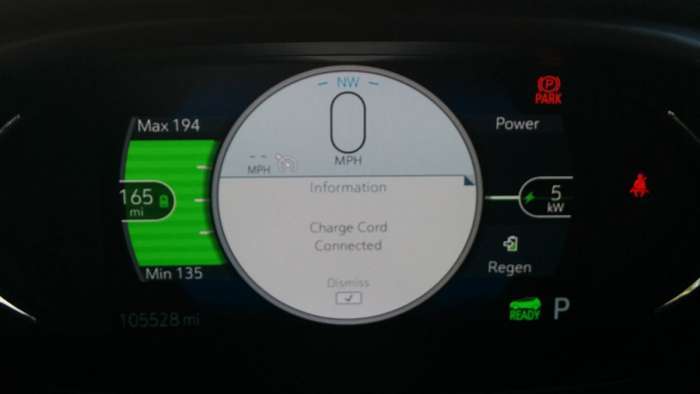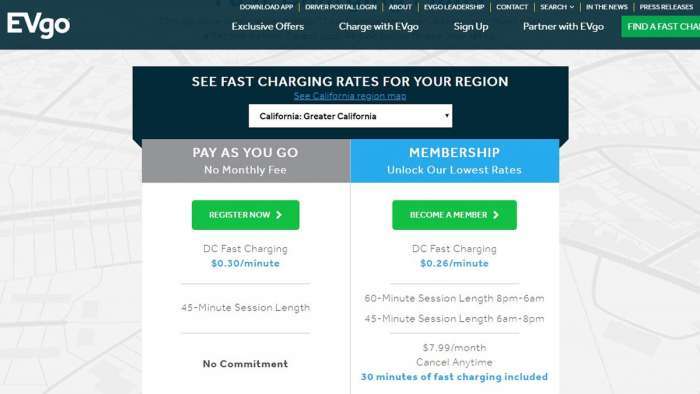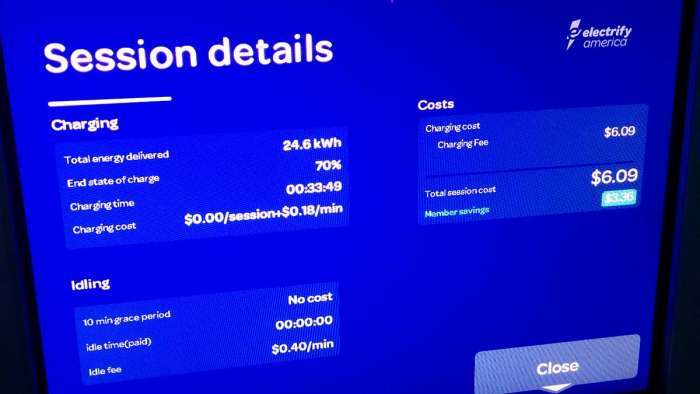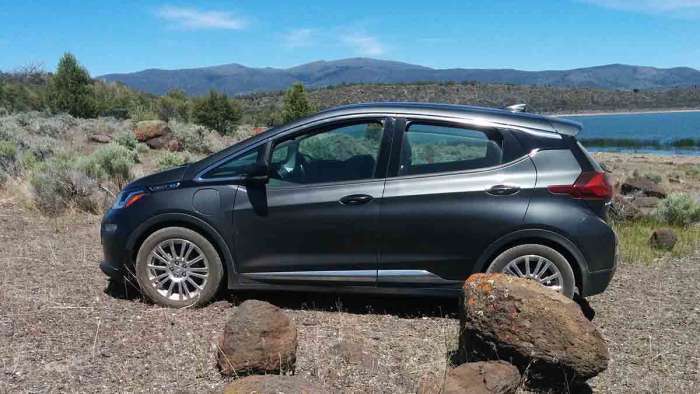GM’s electric vehicles have, up to this point, been highly functional and very well rounded. The original EV1 and S-10 EV were well ahead of their time. The Spark EV was primarily a test platform for modern EV hardware, yet it outclassed most of the other EVs on the market in terms of acceleration and efficiency. The Bolt EV is, to this day, one of the best values in terms of capability for the price, and its regenerative braking system remains the gold standard. So GM’s electric vehicle offerings are feature rich and competitive with the other electric vehicles on the market; however, GM does appear to be slipping behind their competitors in terms of software.

In a recent story, I detailed GM’s partnership with Google to use its Android operating system on their future vehicles, but that operating system will only manage the Infotainment system (entertainment, maps, route planners, etc.). The actual vehicle systems, on the other hand, will still be managed by GM’s own onboard software. I believe this is a huge opportunity for GM, and in this article, I will focus on the software and functionality that GM should incorporate into all their electric vehicles moving forward.
Battery Information Display
It’s easy to just think of the batteries in an electric vehicle the same way as a gas tank in an internal combustion vehicle; however, they are very different components. Sure, they both store energy, but that’s where the parallels end. Battery performance and health is dependent on a number of factors, and electric vehicle owners should have access to all the pertinent information.

Right now, the only battery information available to Chevy Bolt EV owners is the battery’s level in 5% increments, which isn’t a sufficient amount of information. GM needs to build a Battery Information screen (accessible in the same way as the Energy Usage and Charge Setting screens) that will be used on all their electric vehicles moving forward. The Battery Information screen should display the following information.

Battery Level in 1% Increments
This might seem granular, but with electric vehicles now being released with larger batteries and longer ranges, a 5% increment simply doesn’t provide enough information. On a car like the Bolt EV, each 5% bar represents about 12 miles of driving range, which results in a significant amount of uncertainty.
Battery System Activity
GM’s electric vehicles use active thermal management systems, and I don’t foresee that changing anytime soon. The Battery Information screen should include information about which systems are active and how much energy they are consuming. For instance, if it’s a hot day, and the battery coolant system is active, the Battery Information screen should display that it is on and approximately how much energy it is consuming.
Internal Battery Temperature
Other than using apps like Torque Pro (which can access system information through the OBD2 port), there’s no way to see the Bolt EV’s internal battery temperature. This information should be displayed on the Battery Information screen with some sort of graphical context to explain how close to ideal the temperature is. Supporting text can be provided in the owner’s manual, explaining the effects of a cold or hot battery.

Power Input and Output
Imitation is the sincerest form of flattery, and I’m perfectly fine with flattering Tesla in regards to their battery energy and power screen. This is definitely a feature that I think GM should try to replicate. Right now, the only way for Bolt EV owners to see how fast their vehicle is charging is by looking at the Driver Information Center or by checking the charger itself. In either case, the information is limited.
Having an actual power input and charging times displayed on the Infotainment screen would enable Bolt EV owners to capture all the information they might want at a glance. In combination with other battery system information (as described above), I see this being a very popular feature for EV owners.
Battery Control Functions
In addition to information, GM also needs to provide actual user control over some of the battery systems and functionality. In particular, owners need to be able to activate the battery conditioning systems. Currently, GM’s battery conditioning systems run off of preset parameters that the driver cannot change or influence.
I’m not suggesting that GM change those parameters; however, owners should be able turn on the battery’s heating or cooling systems in much the same way that Bolt EV owners can “precondition” the car using the MyChevrolet app. I suggest that GM develop the following user activated software functionality.
Maintain Ideal Temperature
Right now, Bolt EV owners have no way of ensuring that their batteries are at an ideal operating temperature when they leave, even if the vehicle has been plugged in. It appears that GM favored efficiency over performance, and the Bolt EV’s battery can be colder or hotter than ideal, even when it is plugged in and charging.

Just to be clear, if the Bolt EV’s battery becomes exceptionally cold or hot, the battery conditioning systems will activate. What I’m describing here is giving owners the ability to set a narrower, more ideal temperature window of 75 F to 80 F. In hot climates, maintaining an internal battery temperature of less than 80 F requires the air conditioning unit to run, even at night. Likewise, in colder climates, maintaining an internal battery temperature of over 70 F would require the battery’s heater to run. Both require a significant amount of energy, so I agree with GM’s decision to not make this a default function. However, I do think it’s something owners should have the option of activating.
Ideally, the system would enable owners to set a specific target temperature within the ideal spectrum. For instance, in hot climates, the owner might want to set the target ideal temperature at 65 F or 70 F while in colder climates, owners might want to set their target ideal temperature at 80 F or 85 F.
In terms of benefits, this feature would be far more useful to owners in cold climates, but even Bolt EV owners in the Southwestern United States might want to use this feature during their extremely hot summer months. What this ensures is that the Bolt EV owner will have access to the full performance and capacity of the battery.

For example, when I leave the office for my regular trips north, my Bolt EV’s battery is often has an internal temperature of a little over 80 F. On moderately hot days, by the time I reach my first stop, the battery’s internal temperature can be 95 F to 100 F, and that is after 1% or more of my total energy usage was for battery conditioning. In addition to using energy for battery conditioning that could have gone to driving, arriving at a DC fast charger with a 95 F battery means that a good amount of the initial charge rate is actually spent cooling the battery, effectively reducing the car’s charging speed.
Battery Preconditioning
Several automakers such as Porsche and Tesla have already included battery preconditioning functionality in their vehicles, and this would be a valuable addition to the Chevy Bolt EV or any future GM electric vehicle. While the software doesn’t need to be integrated with the navigation (Tesla’s software can actually detect when a Supercharger has been selected as a destination and precondition accordingly), just having the ability to toggle the battery conditioning on and off would be an immensely useful feature.
I do think that GM would need to set some specific constraints about how this feature could be used. Specifically, I don’t think it should be available if the battery is at less than 10% capacity, and similar to using climate control to preconditioning the cabin, the duration should be limited to no more than 20 minutes.
Essentially, the way I envision this functionality working is on long trips or during exceptionally hot or cold weather. When the driver is about 20 minutes out from a DC fast charger, they can activate the Battery Preconditioning function, which will then aggressively heat or cool the battery in order to hit the target ideal internal battery temperature of around 77 F.
I can’t count the number of times I’ve arrived at a DC fast charger with 15% to 20% battery (meaning I had plenty of range to spare), but I couldn’t immediately jump to the fastest charging rate because the AC system was stealing about 3 to 4 kW to cool the battery. We’re only talking about saving a few minutes of charging time here or there, but those minutes add up.
Charging Control Systems
In addition to controlling aspects of the battery system, Bolt EV owners should also have more control over how power is actually fed into the battery. GM has done a good job so far with expanding the functionality of their charging systems, but they still have a lot of work to do.
Expand Target Charge Level
In a previous story, I discussed the Chevy Bolt EV’s charge level functionality that enables owners to limit how full their batteries will charge; however, that functionality is very narrow. Currently, it only applies to Level 2 AC charging, which is most often used at home, work, or when staying at a hotel or motel.

The true value of a system like this is for DC fast charging. Many public charging providers use a per-minute pricing structure, which can be exorbitant when charging after the vehicle has stepped down to a lower charging rate. For instance, EVgo currently charges 26 cents per minute in the “Greater California” region. At my Bolt EV’s peak charging rate of 55 kW, I would be paying about 29 cents per kWh, which works out to just over 7 cents per mile (based on EPA range estimates). However, if I continue to charge after my Bolt EV’s charge rate steps down to 38 kW, I will now be paying 41 cents per kWh, or just over 10 cents per mile.

If I can set the Bolt EV’s battery level limit to 55% (or whatever I might need to make it to my destination) while DC fast charging, I can save significant amounts of money.

At this point, I want to give a gentle community reminder that this should not be used as a way to leave an EV parked in a charging stall for longer than necessary. By doing so, you are blocking others from using an essential public service. Most networks like EVgo will let another EV owner unplug you or activate their own session on a different plug, so long as they can access the charger from their parking space, and other networks such as Electrify America provide a grace period. Basically, the golden rule applies here.
Set Peak Charging Speeds
While it might be easy to assume that faster charging is always better, that’s not necessarily the case. Even in terms of DC fast charging, there might be occasions when charging at a slower speed makes sense. Right now, the Bolt EV offers the option of charging at 8 A or 12 A when using 120 V charging, but I think that GM needs to expand both that option as well as enabling it for 240 V and even DC fast charging.
Level 1 AC
The first change is that the 120 V setting should be changed from a toggle to a graduated scale. The 8 A default setting is good if you don’t know how much power the circuit you are using can take. As a rule, you don’t want to draw more than 80% of the circuit’s rated power, which means 8 A is what you should be using on a 10 A circuit or if you are splitting a 20 A circuit. The 12 A setting is fine if you are using a 15 A circuit or above.
Still, having to choose between only those two options is limited, and I would like to see GM expand the options to 4 A increments from 4 A up to 16 A. Now, the EVSE (electric vehicle supply equipment) that GM provides with its vehicles is only rated for 12 A, so someone wanting to charge at 16 A on 120 V would need to buy a different EVSE. Or GM could simply upgrade their standard EVSE. Hint, hint.
Leve 2 AC
Next, GM needs to expand that functionality for the Level 2 AC, or 240 V charging as well. The Bolt EV’s onboard AC charger accepts 32 A, but it will happily accept less current. For example, the chargers I use at my office only provide 30 A, and my Bolt EV charges just fine.
So you might be asking why we would need to adjust the charging rate if the Bolt EV will happily accept less current. The problem arises when both the Bolt EV and EVSE can draw 32 A, but the circuit can’t support it. Earlier, I mentioned that the maximum draw on a circuit should be no more than 80% of its rated capacity. Well, many 30 A sockets are only rated at 30 A. The EVSE won’t know that and neither will the Bolt EV. They will both attempt to draw more than the rated power of the circuit, which can trip the breaker or worse – causing significant damage in the process. I’ve actually been denied access to RV parks because EV owners had done this in the past.

At present, the only way to manage this is if you have an EVSE that allows you to adjust its amperage, but some EVSEs actually require you to crack open the case and adjust internal circuitry, something most people would rather not do. Providing a maximum L2 charging amperage setting would enable Bolt EV owners to use their existing systems at campsites and RV parks without worrying about whether they booked a 30 A or a 50 A space.
DC Fast Charging
For now, this isn’t as much of an issue for GM because the Bolt EV conveniently falls under Electrify America’s tiered pricing structure; however, when GM starts to produce faster charging electric vehicles, owners may be penalized in a similar way as Hyundai Kona Electric and Kia Niro EV owners. If charging providers continue to offer a demand-based fee structure, having the ability to artificially cap the car’s peak charging rate would be a valuable tool for both reducing charging costs on trips and for adjusting the time spent charging to better match expectations for the stop.

Currently, Electrify America’s pricing structure is per minute. Charging at under 75 kW costs 18 or 25 cents per minute, depending on membership status; however, charging at 75 kW to 125 kW spikes that price up to 50 to 69 cents per minute. The Kona and Niro peak charging rates spike just above that 75 kW cutoff, so they are pushed into the higher tier fee structure. Essentially, they are paying more without seeing any of the actual benefits. If Kona and Niro owners could set their peak charging current to 175 A (effectively, a charging rate up to about 65 kW), they would fall under – and maximize – the cheapest pricing tier.

Further, many current and upcoming premium EV offerings charge at rates so fast that owners feel compelled to structure their stops around the time spent charging, so rather than sitting down and enjoying a meal, they take their food to go and eat half of it in their car. For DC fast chargers with a per kWh pricing structure, it might make more sense to set the charging rate to match the expectations for the stop.
If I’m at a restaurant where I want to sit down and enjoy a meal, watch a game on TV, or just relax with friends, I might prefer to set the maximum charging rate to 40 kW or 50 kW. I know I’m going to be at the site for an hour or hour and a half anyway, and charging at a lower rate reduces the energy consumed by the car’s battery management system. Essentially, when you’re paying per unit of energy, charging at a slower rate is a valid strategy.
Conclusion
Over the years, I’ve been very impressed with GM’s electric vehicles from an engineering and design perspective; however, they need to make a number of improvements to their onboard software. These are features and functionalities that will make GM’s electric vehicle offerings more compelling and improve the overall user experience.
See you next time as I break down the costs of charging the Chevy Bolt EV on various public charging networks!
About The Author
Eric Way focuses on reporting expert opinion on GM brand electric vehicles at Torque News. Eric is also an instructional designer and technical writer with more than 15 years of writing experience. He also hosts the News Coulomb video blog, which focuses on electric vehicles, charging infrastructure, and renewable energy. Eric is an active member of the EV Advocates of Ventura County, a volunteer organization focused on increasing the widespread adoption of electric vehicles. You can follow Eric on News Coulomb Youtube, on Facebook at @NewsCoulomb as well as on Twitter at @eway1978.












